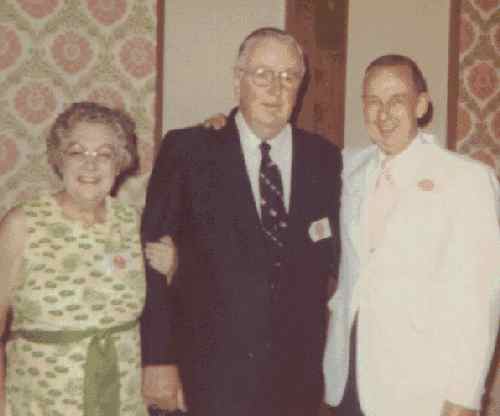 report sent with
a newsletter before the second reunion of 275th Armored Field Artillery Battalion
in Carlisle, PA. in 1976. The article was written by Capt. David M. Cleary,
Battery Commander of "B" Battery during W.W.II. He is pictured to the right
with E.L.D. Breckenridge and his wife, Sue.
report sent with
a newsletter before the second reunion of 275th Armored Field Artillery Battalion
in Carlisle, PA. in 1976. The article was written by Capt. David M. Cleary,
Battery Commander of "B" Battery during W.W.II. He is pictured to the right
with E.L.D. Breckenridge and his wife, Sue.